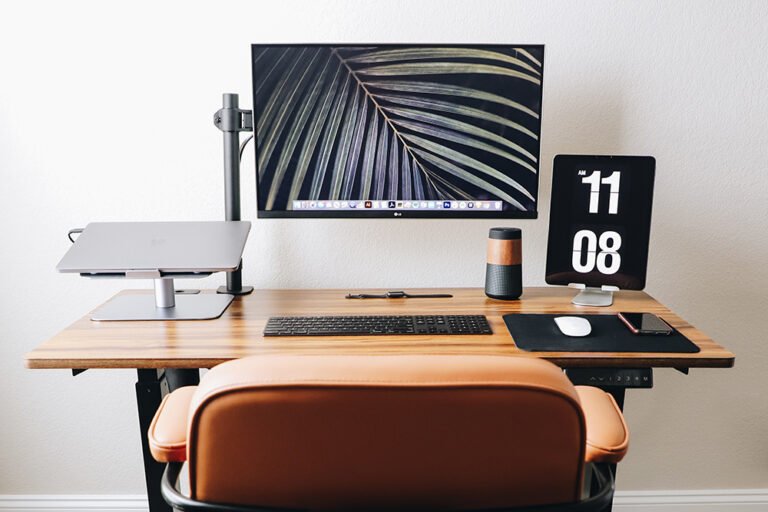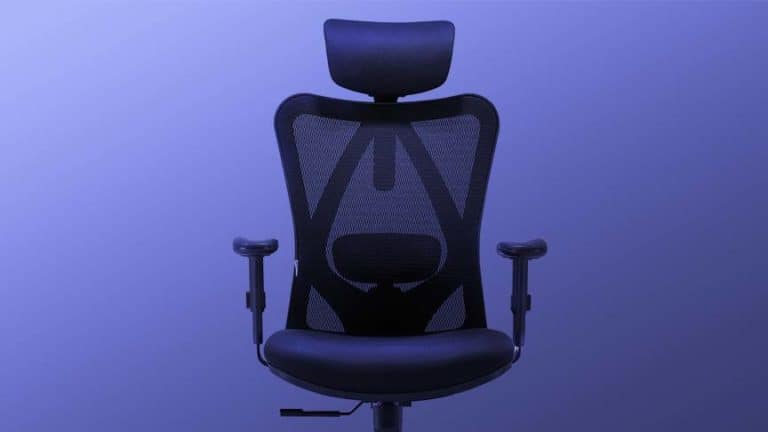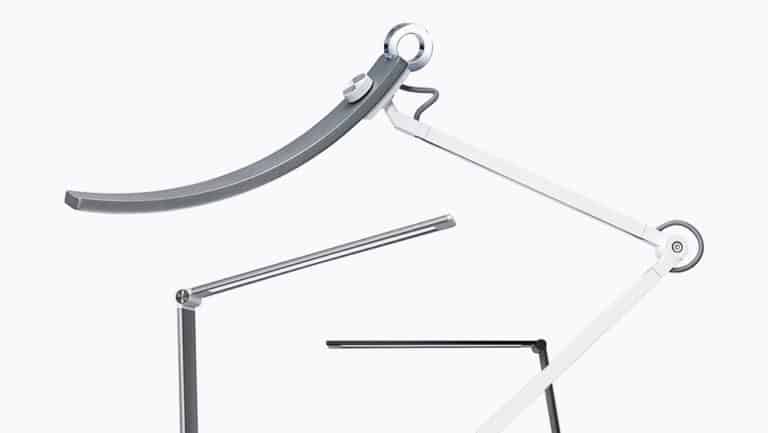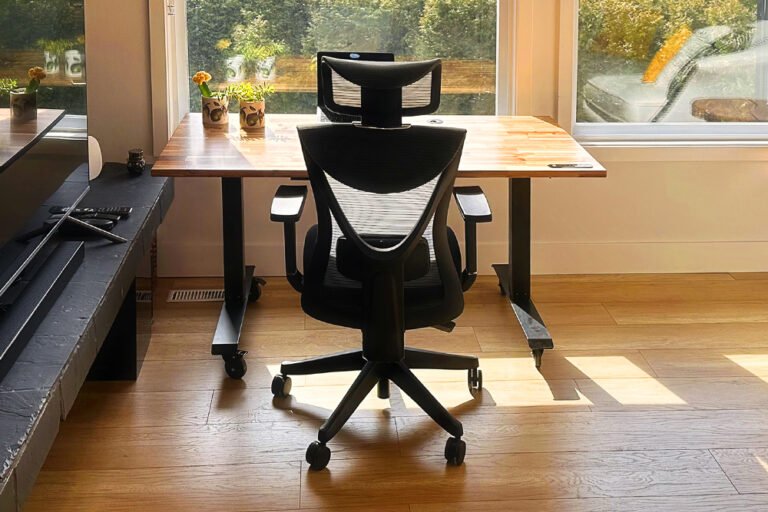How to set up a home office in 5 steps

Setting up a home office has become a necessity for many people in recent years. Due to the growing trend of remote work and work flexibility, having a functional and comfortable workspace in our home is essential to increase productivity and maintain a balance between personal and professional life.
In this article, we are going to explore the best tips and tricks to find and adapt a space in your home to set up the perfect home office for you, optimizing every detail to the maximum to guarantee your work performance.
1. Choose the right spot
The location of your home office is a key factor in ensuring a conducive environment where you can work quietly and without interruptions.
Ideally, look for a space with little traffic and away from distractions and interruptions from other members of the household. Try, therefore, to avoid the living room or other areas dedicated to entertainment.
If possible, turn a large bedroom or dressing room into your office. If you can’t, find a quiet corner in a larger room where you can set up a desk. There are desks shaped to fit every type of space.
If you don’t even have room for a desk, you can also use a folding table or one that is free during working hours and turn it into a removable desk. It’s not ideal, but it’s better than nothing.
1.1. Choose a naturally illuminated spot
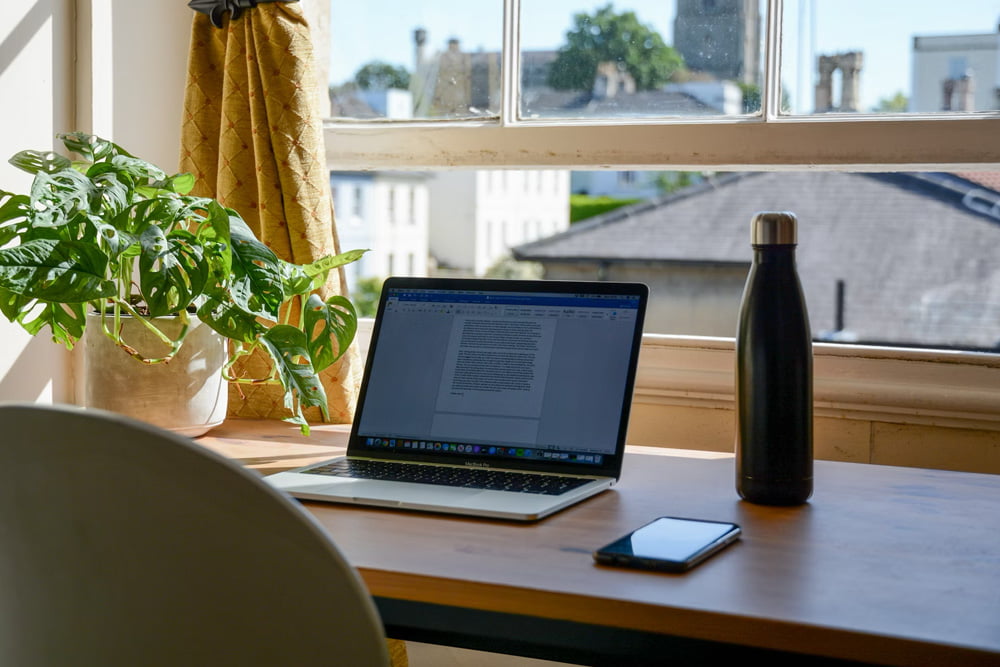
Unless you have a job with specific light requirements, it is important to choose a well-lit place so that your eyes do not have to make an effort to compensate for the change in brightness between the ambient light and the screen, although you can always help yourself with lamps, as we will see later.
A place that enjoys natural light most of the day will also help you to reduce your electricity consumption at home and to be more aware of the time of day. In addition, natural light increases the production of serotonin, which makes us feel better, more vital and energetic, as this study from Brigham Young University (USA) showed.
Consequently, the best place to place your desk is near a window, where you can have natural light most hours of the day. Try to adjust the position of the desk so that you do not have uncomfortable reflections on the screen or direct sunlight glare.
1.2. Maximize your privacy
Having your own work area, with some privacy, where you can set up your home office will enhance your home office experience in several ways:
- Concentration and focus: Having a private space allows you to concentrate and focus on your work tasks without distractions. By having a separate area, you can avoid constant interruptions from other people who may be in the home, such as family members, roommates, or pets.
- Confidentiality: In certain jobs, you may need to handle confidential or sensitive information that would be inappropriate to share with other members of the house.
- Professionalism: Maintaining a private area for your home office helps create a clearer separation between your personal and professional life, which can contribute to greater discipline and productivity.
- Noise reduction: If you have your own area, you can enjoy greater silence, which is especially useful if you need to concentrate, think or make calls or video conferences.
- Ergonomics and comfort: If you have your own workspace, you can put in furniture and accessories suited to your needs and preferences, which may not fit well in other instances in the house.
If you have a room of your own for your office, this in itself creates a private area, especially if it has a door. Otherwise, you can use screens, panels, curtains, shelves or other furniture to create as much separation as possible within a room.
2. Invest in ergonomics and comfort
Your workplace is one of the places where you spend the most hours a day, so it is essential that your workspace is comfortable and ergonomic. Invest in quality furniture and accessories, and you will avoid aches and pains and long-term health problems.
Personally, I recommend you make sure you have the following 3 elements:
2.1. A good ergonomic chair
Invest in a quality chair that provides good support for your back and promotes proper sitting posture. The more adjustable it is, the more you can tailor it to your individual needs.
However, not all chairs take up the same amount of space or have the right design for any room, so I recommend you have a look at my guide to the best office chairs.
2.2. A desk suited to your needs
Choose a desk large enough to fit your work equipment in the space you have available. It doesn’t need to be gigantic, but it does need to make good use of the space and make you feel comfortable sitting in front of it. To do this, you only need to consider 3 things before you buy it:
- The space your equipment takes up: Calculate how much space you require for your computer and other peripherals, such as external monitors, graphics tablets, printers, etc.
- The space available in the room: Measure the space where you want to place the desk. Consider details such as the best desk shape for the space, or whether you will need drawers and shelves to store your stuff. See our guide on how to choose a desk where we explain the different types of desks available, prices, features, pros and cons.
- Desk height: Avoid neck and shoulder strain from using desks that are too low or too high for you. If you have to hunch over to work as if your legs are dangling off the chair to reach the desk, that type of desk is not right for you. Adjustable standing desks are an interesting option to consider, some are motorized and even have memory of your preferences.
2.3. Additional light sources
Lighting plays a critical role in performance and concentration. Make the most of natural light by placing your desk near a window, but be sure to complement your workspace with a good desk lamp that provides even illumination without glare on the screen when sunlight is not enough.
In our guide to the best desk lamps, you’ll find the best ones on the market to take care of your eyes, and at very attractive prices too.
3. Create a space that is easy to organize

A well-organized home office is essential for maintaining an attractive workspace and reducing distractions and wasted time. In addition, keeping your office organized makes it easier to live at home.
Here are some tips for keeping your new workspace organized:
3.1 Use shelving and filing cabinets
Optimize the vertical space in your office by using shelves and filing cabinets to store your documents, books and other materials.
If you want to get organized, keep everything labelled, so you can easily find it when you need it.
3.2. Keep cables organized
Loose cords can make your office look like a mess and also pose a safety hazard to other household tenants.
Use cable organizers to keep cables tidy and prevent tangles on your desk. They usually come with double-sided adhesive or screws and some are hidden under the desk top.
If you need an extension cord because you don’t have an outlet nearby, use an extension strip with enough plugs for all your devices and clip it to your desk (I use double-sided tape), so you’ll only have a single cord running across the floor.
4. Use décor to create an inspiring and motivating environment

You’re going to be spending quite a bit of time in your office, at home, so it’s advisable to decorate your space with elements that make you feel good, inspire you and motivate you to work. Here are some ideas:
4.1. Decorate the walls
Put up pictures, photographs, or posters that reflect your interests and transmit positive energy. For example, you can choose artwork that you really like, inspirational landscapes or pictures with motivational quotes.
If you need to concentrate, you may prefer a more minimalist approach, but in any case, create a space that feels as much as your own as possible.
4.2. Place plants and flowers around you.
Add plants or flowers to add a touch of nature to your work environment. Several scientific studies show that the simple fact of being in a room with plants improves our mood.
In addition to beautifying the space, plants also help purify the air and create a healthier environment.
5. Optimize the devices and accessories in your environment
Technology plays a crucial role in our work life in terms of both productivity and convenience.
Here are some recommendations to optimize your technological environment:
5.1. Surround yourself with quality accessories and peripherals.
Sometimes people surround themselves with poor quality keyboards, screens, graphics tablets and mice and then wonder why they start to see poorly, have wrist pains or stiff fingers.
If you think about it, you have daily contact with these accessories and if the experience you have when using them is bad or causes you problems, working from home will become difficult.
I recommend you to go through our accessories section to take a look and find the ones that best suit your needs.
5.2. High-speed Internet
Make sure you have a sufficiently fast and stable Internet connection to avoid interruptions while working, especially if there are other people working from home or if streaming services (TV, video games, etc.) are used while you are working.
If the Internet signal in your workspace is weak due to the distance from your router, consider using a WiFi signal booster or repeater. If you need to buy one, check with your Internet provider beforehand about what features it should have.
5.3. Update your devices
Keep your technology devices, such as your computer and printer, up to date with the latest software and firmware versions. This will keep your equipment more secure, help you get the most out of its functions and ensure optimum performance.

